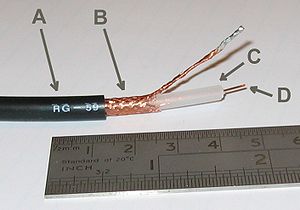I’ve been reading over the last few weeks about the controversy surrounding Verizon’s profitability in its wireless versus wireline business. Verizon has been claiming that it is not making very much money from its landline business while critics are charging that Verizon is cooking the books to make the wireline business look bad.
This link is a report on Verizon’s 3rd quarter earnings. In the third quarter Verizon had total revenues of $30.3 billion. This was comprised of $20.4 billion for the wireless segment and $9.7 billion for the wireline businesses. The profit story is quite skewed and they show profits of $6.9 billion for the wireless business but only $155 million for the total wireline business. If you take out depreciation to get operating margins, the wireless business made $8.9 billion for the quarter while the landline business made $2.2 billion.
In looking at these numbers as an outsider I ask myself if they make sense. I probably have more ability to judge these numbers than most people because I am privy to the books of hundreds of telecom companies that are in the same business lines as Verizon.
Verizon claims their losses for landline are so big because of all of their continuing losses of landlines. But all of my clients have been losing landlines and yet many of them are still quite profitable. Let’s look at some of the piece parts of the company to kick the tires on Verizon’s claim of low profitability:
- Verizon has 5.2 million video subscribers. It’s a pretty well-known industry fact that these are low margin customers.
- Verizon has 5.9 million FiOS data customers and another 3.0 million DSL customers. And 40% of the FiOS customers were buying the faster speeds of between 50 Mbps and 500 Mbps. Universally, data is a high margin business.
- Verizon had 4.1 million voice customers on FiOS and 6.8 million voice customers on copper. While voice lines are dropping, and Verizon lost a net 432,000 customers over the last year, the margins on voice should be high.
- Landline revenues include $3.6 billion in core and strategic services and another $1.7 billion in global wholesale. These product lines include what are the most profitable business lines for most telcos – such things as selling special access circuits, internet backbone connections and fiber connections to cell towers. Most of my clients report these business lines to be very highly profitable.
The overall operating margin for the landline business, at 23% ($2.2 billion of margin compared to $9.7 billion of costs) is very low compared to almost all of my customers. Much smaller telephone companies than Verizon have margins that are somewhere in the 30% – 40% range.
So, is Verizon just very inefficiently operated or are they cooking their books? I consider the following:
- There is a lot of corporate leeway in assigning costs between operating divisions. I help my clients make these kinds of cost allocations all of the time and there is a wide variety of ways that you can allocate costs that will still fly with an external auditor. So Verizon has a lot of leeway to change the relative profits between the two operating divisions.
- Verizon publicly has been trying to convince the FCC that they ought to be able to transition customers from copper to wireless. The most visible controversy has been about Fire Island off New York City that got devastated by hurricane Sandy. But Both Verizon and AT&T have made it clear that they would like to find a way to walk away from maintaining older copper.
- On the surface the profits look too small. This either has to be the result of very inefficient operations or of allocating costs to slew profits. If the wireline business really only has a 20% margin then Verizon would be far better off to spin those businesses off to standalone regional companies who could probably double the margins within a few years.
It’s obviously very hard to know all of the facts within the books of a company as big as Verizon. But my gut tells me that they ought to be making more money on the wireline business. While Verizon claims the poor profitability is due to loss of landlines, that only comprises a small percentage of the landline business. A lot of that business comes from the very profitable business lines of supplying transport for the Internet and for cell sites.
So are they cooking the books? Probably.





